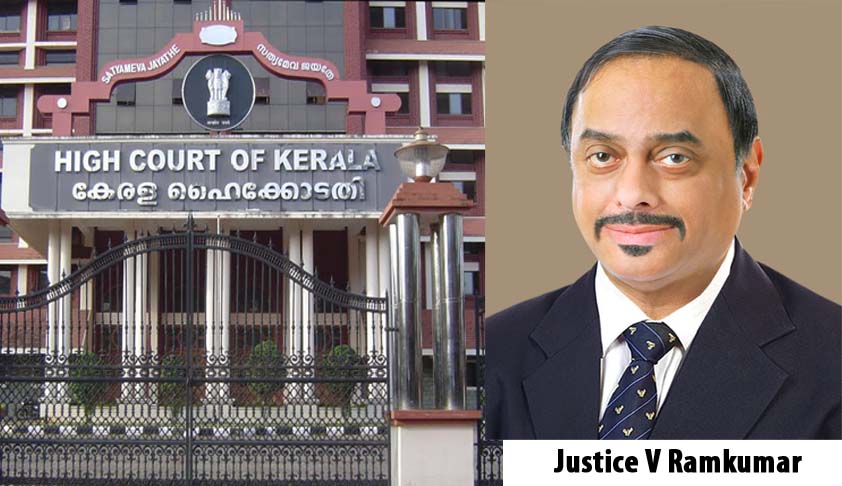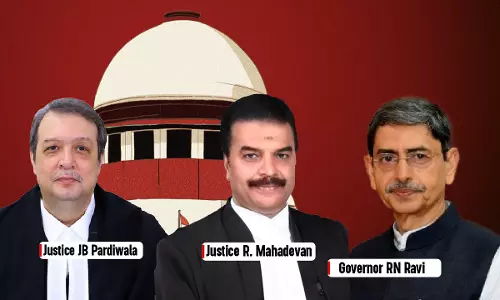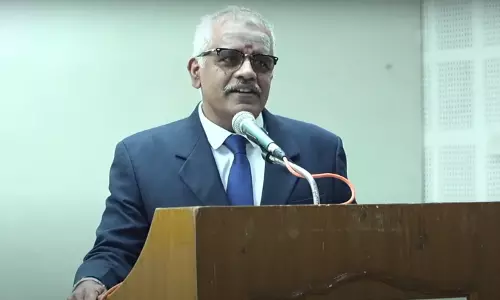
Reversing the judgment of the Special Judge for trial of NDPS cases, Thodupuzha convicting A1 and A3 for an offence punishable under Section 20 (b) (ii) (B) of the Narcotic Drugs and Psychotropic Substances Act, 1985 (“the NDPS Act”), for having been found in possession of 18 Kgs of ganja, the High Court of Kerala in Ramesh Vs State of Kerala 2016(5)KHC 303, has recorded an order...
Reversing the judgment of the Special Judge for trial of NDPS cases, Thodupuzha convicting A1 and A3 for an offence punishable under Section 20 (b) (ii) (B) of the Narcotic Drugs and Psychotropic Substances Act, 1985 (“the NDPS Act”), for having been found in possession of 18 Kgs of ganja, the High Court of Kerala in Ramesh Vs State of Kerala 2016(5)KHC 303, has recorded an order of acquittal.
PROSECUTION CASE
- The prosecution case as discernible from the reported verdict is as follows:-
At about 8:00 pm on 26-03-2007 PW2 who was the S.I of Police, Santhanpara (in Idukki district) received a credible information to the effect that some persons were transporting to Tamil Nadu dried ganja in a Tata Sumo vehicle bearing Reg No: KL-4 –D- 8007 along the Pooppara – Bodimet Road. After making a G.D entry to that effect and after despatching an intimation to the C.I of Police, a police party headed by PW2 flung into action and proceeded to the place in their police jeep. They spotted the offending vehicle near the petrol pump at Pooppara. Disregarding the signal given by the police to stop the vehicle, the offending vehicle sped away. After a hot chase, the police party intercepted the vehicle. A1 and A3 were found in that vehicle. When interrogated with regard to the smell of ganja inside the vehicle, A1 and A3 revealed that they had placed beneath a tree near the Bodimet check post a sack containing 18 Kgs of ganja. The police party then took A1 and A3 to the place mentioned by them. As pointed out by A1 and A3 a sack containing 18 packets altogether weighing 18 Kgs of ganja found beneath a tree was located. The sack was seized under a mahazar and samples were drawn from them, packed and sealed. A1 and A3 along with the contraband properties were taken to the Santhanpara police station and Crime No: 84/2007 was registered for the aforesaid offence on the basis of the suo motu report of PW2. PW9, the C.I of police took over the investigation and charge sheeted three accused persons.
- The trial court acquitted A2 but convicted A1 and A3 of the aforementioned offence and sentenced them each to rigorous imprisonment for 5 years and to pay a fine of Rs. 25,000/- with a default sentence of R.I for 6 months. It was the above judgment of the trial court which was assailed by A1 and A3 in the appeal before the High Court.
- The main issue before the High Court was whether the recovery of ganja in this case would attract Section 27 of the Evidence Act. The reasons given by the High Court for dislodging the conviction and recording the order of acquittal are:-
a) The confessional statement of A1 and A3 to PW2 is hit by Section 25 of the Evidence Act. (vide paras 9 and 11 of the reported verdict).
b) A1 and A3 were arrested only after the discovery of ganja in a sack placed beneath a tree. (vide para 10).
C) Until the discovery of the ganja A1 and A3 could not be treated as persons who were accused of any offence. Therefore, the information furnished by A1 and A3 to PW2 could not be treated as information by persons accused of an offence so as to become admissible under Section 27 of the Evidence Act. (vide paras 10 and 11).
d) According to PW2 the information relating to the incident was revealed by A1 and A3 and not by either A1 or A3 so as to bring it within the purview of Section 27. No separate statement of A1 or A3 has been recorded or pressed into service. (vide para 9).
e) PWs 1, 3 and 6 turned hostile to the prosecution. The only evidence available regarding the incident is the evidence of PW2. (vide para 8).
f) There was a Vigilance inquiry against PWs 2, 8 and 9 in connection with the seizure of ganja involved in this case. There is everything to suspect foul play in the matter. (vide para 15).
THE UNSUSTAINABILITY OF THE ABOVE REASONS
- We will now examine the fallacy of the above reasons given by the learned Judge in support of the acquittal.
a) Whether the confession by A1 and A3 attracts Section 25 of the Evidence Act ?
6. It is undisputable that the confessional statement given by A1 and A3 to PW2 (Sub Inspector of Police) that they have kept a sack containing 18 Kgs of ganja beneath A tree near the Bodimet check post, is a confession hit by Section 25 of the Evidence Act. But if that statement, coupled with the subsequent recovery of the contraband ganja attracts Section 27 which is a proviso to both Sections 25 and 26 of the Evidence Act, then it cannot be said that the disclosure statement is inadmissible for the reason that it is hit by Section 25.
b) Whether the disclosure statement should be recorded after the formal arrest of the accused
7. Here, the High Court was presumably expecting that A1 and A3 should have been first arrested and then their statement recorded. Even Section 27 of the Evidence Act postulates only custody and not arrest. Hence, if the disclosure statement is made while in the custody of the police, the requirement of Section 27 is satisfied (vide paras 39 and 41 of Vikram Singh V. State of Punjab (2010) 3 SCC 56; paras 167 and 168 of Mohd. Arif V. State (NCT of Delhi) (2011) 13 SCC 621. Formal arrest of the person is not necessary (Chandra Prakash V. State of Rajasthan (2014) 8 SCC 340). It would be sufficient if the person is under the ken of surveillance. (vide Dharam Deo Yadav V. State of U.P (2014) 5 SCC 509).
c) Whether the person should be accused of an offence while making the disclosure statement ?
8. The expression “person accused of an offence” in Section 27 is descriptive of the person against whom a confessional statement made is declared provable. (vide Pakala Narayana Swami V. King Emperor AIR 1939 P.C 47). Approving the above declaration of law, a Constitution Bench of the Supreme Court of India in State of U.P V. Deoman Upadhyaya AIR 1960 SC 1125 observed as follows in para 7:-
“For the ban to be effective the person need not have been accused of an offence when he made the confession.”
See also Bheru Singh V. State of Rajasthan (1994) 2 SCC 467.
d) Whether joint disclosure statement by A1 and A3 takes it out of Section 27 ?
9. What I could make out from paragraph 9 of the reported verdict is that the High Court is criticizing the prosecution for not recording separate disclosure statements on the premise that joint disclosure statement is not envisaged by Section 27. If that be the assumption, it is fallacious. In paragraphs 145 to 147 of State (NCT of Delhi) V. Navjot Sandhu (2005) 11 SCC 600 (Parliament attack case of 2001) the Apex Court held that joint disclosure or simultaneous disclosure is also admissible under Section 27. If on the contrary, the disclosure statements of two or more accused persons are recorded one after the other, the first in point of time would be admissible under Section 27 (vide Sukhvinder Singh V. State of Punjab (1994) 5 SCC 152).
10. If the purport of para 9 of the reported verdict is that the statements of A1 and A3 were not reduced to writing, that also will not prevent the applicability of Section 27 of the Evidence Act. Failure to record the disclosure statement is not fatal to the prosecution. What is important is that the investigating officer should credibly depose before Court regarding the fact discovered. ( vide paras 70 and 72 of S.C Bahri V. State of Bhihar AIR 1994 SC 2420; para 69 of Mohd. Arif V. State (NCT of Delhi) (2011) 13 SCC 621.
e) The impact of the independent witnesses turning hostile to the prosecution
11. The evidence of the detecting police officer who effected the recovery does not stand vitiated merely because the mahazar witnesses turned hostile to the prosecution (vide Mohd. Aslam V. State of Maharashtra (2001) 9 SCC 362).
f) The impact of Vigilance inquiry against the police personnel
12. Merely because PWs 2, 8 and 9 faced a vigilance inquiry, it cannot straightaway be assumed that there was foul play in the detection or investigation in this case especially when the police officers had shown sufficient guts to intercept the offending vehicle, apprehend the suspects and finally charge sheet them without any lapse on their part. The final outcome of the vigilance inquiry is still not known. Hence it was not proper to suspect the veracity and actions of the police officers. It is too well known that getting a vigilance inquiry initiated against a public servant is not difficult. All that is necessary is to properly draft a complaint which in reality may be a false and vexatious complaint. Moreover, the law is well settled that merely because the investigation is defective and motivated, it cannot enure to the benefit of the accused unless there has been prejudice or failure of justice. (vide C. Muniappan V. State of T.N (2010) 9 SCC 567; Sukhwinder Singh V. State of Punjab (2014) 12 SCC 490; State of Karnadaka V. K.Yarappa Reddy (1999) 8 SCC 715).
MY CONCLUSION
Such acquittals on palpably erroneous grounds send a wrong signal to likeminded criminals for indulging in the obnoxious and nefarious trafficking of narcotic drugs which have already ruined several families. Adolescents fall the most vulnerable prey to the dope pedlers. Nobody has any right to habituate the gullible victims to the vice of drug abuse and push them into a cursed world of no return.
Read the Judgment here.
Justice V Ramkumar is a former Judge of the High Court of Kerala.
[The opinions expressed in this article are the personal opinions of the author. The facts and opinions appearing in the article do not reflect the views of LiveLaw and LiveLaw does not assume any responsibility or liability for the same]
This article has been made possible because of financial support from Independent and Public-Spirited Media Foundation.





